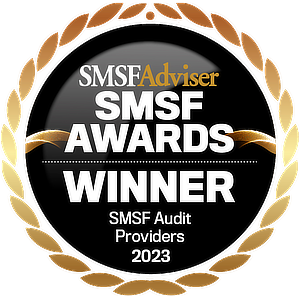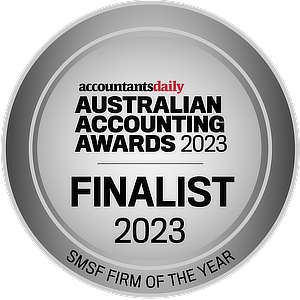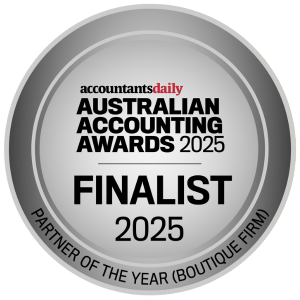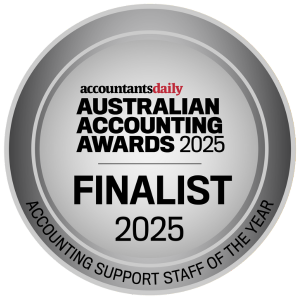The Safe Harbour provisions as announced by the ATO in Practical Guidance Statement 2016/5 (PCG 2016/5) concern related party limited recourse borrowing arrangements (LRBAs).
There have been rumblings by the ATO for some time now about their concerns regarding non-arms’ length LRBAs. ATO interpretive decisions originally released in December 2014 (ATO ID 2014/39 and ATO ID 2014/40) raised the issue of non-arms’ length LRBAs but only gave extreme examples of a situation where they would levy Non-Arms’ Length Income (NALI) Tax over an arrangement. These interpretive decisions and their successor IDs (ATO ID 2015/27 and 28) provide little clarity for trustees and advisors in this area. So up until quite recently we have been operating in a vacuum, only knowing that the regulator did not like non arms’ length dealings in the realm of LRBAs.
PCG 2016/5 steps into the breach and provides trustees with clear guidelines by which they must conform, if they wish to be guaranteed that the regulator will give them the nod with regard to the arms’ length nature of their related party LRBA.
The safe harbour rules are split into 2 categories:
- Borrowings used to acquire listed shares
- Borrowings used to acquire real property
Real Property Safe Harbour Guidelines
Interest Rate
Reserve Bank of Australia Indicator Lending Rates for banks providing standard variable housing loans for investors. Applicable rates:
- For the 2015-16 year, the rate is 5.75%
- For the 2016 17 and later years, the rate published for May (the rate for the month of May immediately prior to the start of the relevant financial year)
Fixed / Variable
Interest rate may be variable or fixed
- Variable – uses the applicable rate (as set out above) for each year of the LBRA
- Fixed – trustees may choose to fix the rate at the commencement of the arrangement for a specified period, up to a maximum of 5 years.
The fixed rate is the rate published for May (the rate for the May before the relevant financial year).
The 2015-16 rate of 5.75% may be used for LRBAs in existence on publication of these guidelines, if the total period for which the interest rate is fixed does not exceed 5 years (see ‘Term of the loan’ below)
Term of the loan
Variable interest rate loan (original) – 15 year maximum loan term (for both residential and commercial)
Variable interest rate loan (re-financing) – maximum loan term is 15 years less the duration(s) of any previous loan(s) relating to the asset (for both residential and commercial)
Fixed interest rate loan – a new LRBA commencing after publication of these guidelines may involve a loan with a fixed interest rate set at the beginning of the arrangement. The rate may be fixed for a maximum period of 5 years and must convert to a variable interest rate loan at the end of the nominated period. The total loan term cannot exceed 15 years.
For an LRBA in existence on publication of these guidelines, the trustees may adopt the rate of 5.75% as their fixed rate, provided that the total fixed-rate period does not exceed 5 years. The interest rate must convert to a variable interest rate loan at the end of the nominated period. The total loan cannot exceed 15 years.
Loan to Market Value Ratio (LVR)
Maximum 70% LVR for both commercial and residential property
If more than one loan is taken out to acquire (or refinance) the asset, the total amount of all those loans must not exceed 70% LVR.
The market value of the asset is to be established when the loan (original or re-financing) is entered into.
For an LRBA in existence on publication of these guidelines, the trustees may use the market value of the asset at 1 July 2015.
Security
A registered mortgage over the property is required
Personal Guarantee
Not required
Nature & frequency of repayments
Each repayment is of both principal and interest
Repayments are monthly
Loan Agreement
A written and executed loan agreement is required
A Collection of Stock Exchange Lists Shares or Units Safe Harbour Guidelines
Interest Rate
Reserve Bank of Australia Indicator Lending Rates for banks providing standard variable housing loans for investors plus 2%. Applicable rates:
- For the 2015-16 year, the interest rate is 5.75% + 2% = 7.75%
- For the 2016-17 and later years, the rate published for May plus 2% (the rate for the May before the relevant financial year)
Fixed / Variable
Interest rate may be variable or fixed
- Variable – uses the applicable rate (as set out above) for each year of the LBRA
- Fixed – trustees may choose to fix the rate at the commencement of the arrangement for a specified period, up to a maximum of 3 years (see ‘Term of the loan’ below). The fixed rate is the rate for May plus 2% (the rate for the May before the relevant financial year)
The 2015-16 rate of 7.75% may be used for LRBAs in existence on publication of these guidelines, if the total period for which the interest rate is fixed does not exceed 3 years (see ‘Term of the loan’ below)
Term of loan
Variable interest rate loan (original) – 7 year maximum loan term
Variable interest rate loan (re-financing) – maximum loan term is 7 years less the duration(s) of any previous loan(s) relating to the collection of assets
Fixed interest rate loan – a new LRBA commencing after publication of these guidelines may involve a loan that has a fixed interest rate set at the beginning of the arrangement. The rate may be fixed up to for a maximum of 3 years, and must convert to a variable interest rate loan at the end of the nominated period. The total loan term cannot exceed 7 years.
– For an LRBA in existence on publication of these guidelines, the trustees may adopt the rate of 7.75% as their fixed rate, provided that the total period of the fixed rate does not exceed 3 years. The interest rate must convert to a variable interest rate loan at the end of the nominated period. The total loan cannot exceed 7 years.
LVR
Maximum 50% LVR
If more than one loan is taken out to acquire (or refinance) the collection of assets, the total amount of all those loans must not exceed 50% LVR.
The market value of the collection of assets is to be established when the loan (original or re-financing) is entered into.
For an LRBA in existence on publication of these guidelines, the trustees may use the market value of the asset at 1 July 2015.
Security
A registered charge/mortgage or similar security (that provides security for loans for such assets)
Personal Guarantee
Not required
Nature & frequency of repayments
Each repayment is of both principal and interest
Repayments are monthly
Loan agreement
A written and executed loan agreement is required
The original date by which funds had to comply with these standards was 1/7/2016. There has however been a recent announcement which has pushed the date back to 31 January 2017.
What about assets that don’t fit into either of these categories?
Trustees and advisors should be aware that the safe harbour provisions do not cover all the types of investments that an SMSF can acquire via a limited recourse borrowing arrangement. Unlisted shares and semi-related trusts are notable omissions. Don’t think that just because the underlying investment held in a semi-related trust is property that the safe harbour rules will apply.
If an SMSF does have a related party LRBA in place where the acquirable asset is not listed shares or real property, the trustees must prepare themselves to defend the arms’ length nature of their arrangement. They should document all of the contributing factors which lend weight to arms’ length terms. The safe harbour guidelines are a good place to start but it would be good to try to determine and document the terms by which a 3rd party lender would lend for such an asset. This may not always be easy as there may not be a lending market for all assets. Alternatively, in order to comply, the arrangement could be refinanced with a 3rd party brought in as the lender.
How do the proposed 2016 Federal Budget Measures affect Safe Harbour?
The proposed retrospective lifetime non-concessional cap of $500,000 per member (that is all contributions made from 1 July 2007), has thrown a spanner in the works for many holders of LRBAs, both related and unrelated. Many trustees relied on the ability to make substantial future contributions to repay these loans and the door it appears has been unceremoniously shut on them.
It should be stressed that the legislation is yet to pass through Parliament. The composition of the Senate is such that it won’t be a given that it just sails through unopposed. We may at the end of the day see substantial changes made to it. This however is not a helpful sentiment for trustees that will be required to make large changes to their LRBA structure before 31 January 2017.
The only concession that has come to light was made by the Treasurer Scott Morrison, in a letter to the SMSF Owners Alliance on 29 June 2016….
“In addition, transitional arrangements will apply to SMSFs with existing borrowings, including LRBAs. Members of SMSFs with existing borrowings will be permitted to make further non-concessional contributions to the extent necessary to ensure the legal obligations of SMSFs that existed on or before the Commencement Date are met or to comply with the Australian Taxation Office (ATO) Practice Compliance Guideline 2016/5 (PCG 2016/5). These additional non-concessional contributions will be counted towards the lifetime non-concessional cap, but will not result in a breach of the lifetime non-concessional cap, until 31 January 2017. Once legislated, this deadline will be extended only in exceptional circumstances and at the discretion of the Commissioner of Taxation.
This transitional period allows those with no other practical option than to make further non-concessional contributions to meet legal obligations that existed at the Commencement Date or to comply with PCG 2016/5 sufficient time to rearrange their affairs such that they do not breach the cap as a result of contributions made after the Commencement Date.
The date of 31 January 2017 is consistent with the deadline set by the ATO in relation to PCG 2016/5, which provides safe harbour guidance for SMSFs who have borrowed from related parties under a LRBA.”
Trustees should be careful before they proceed to make contributions based on this statement. The key words in the letter which give us cause for concern are where it states “those with no practical option other than to make further non-concessional contributions to meet legal obligations…” This is extremely vague and we hope that the Treasurer will give clarity as to what range of scenarios would constitute “no practical option”.
The issues surrounding the safe harbour rules for LRBAs are complex and as all situations will be different, trustees should seek their own advice before taking any action. We encourage anyone who believes they have an issue in this area to contact an expert advisor at Aquila Super.















